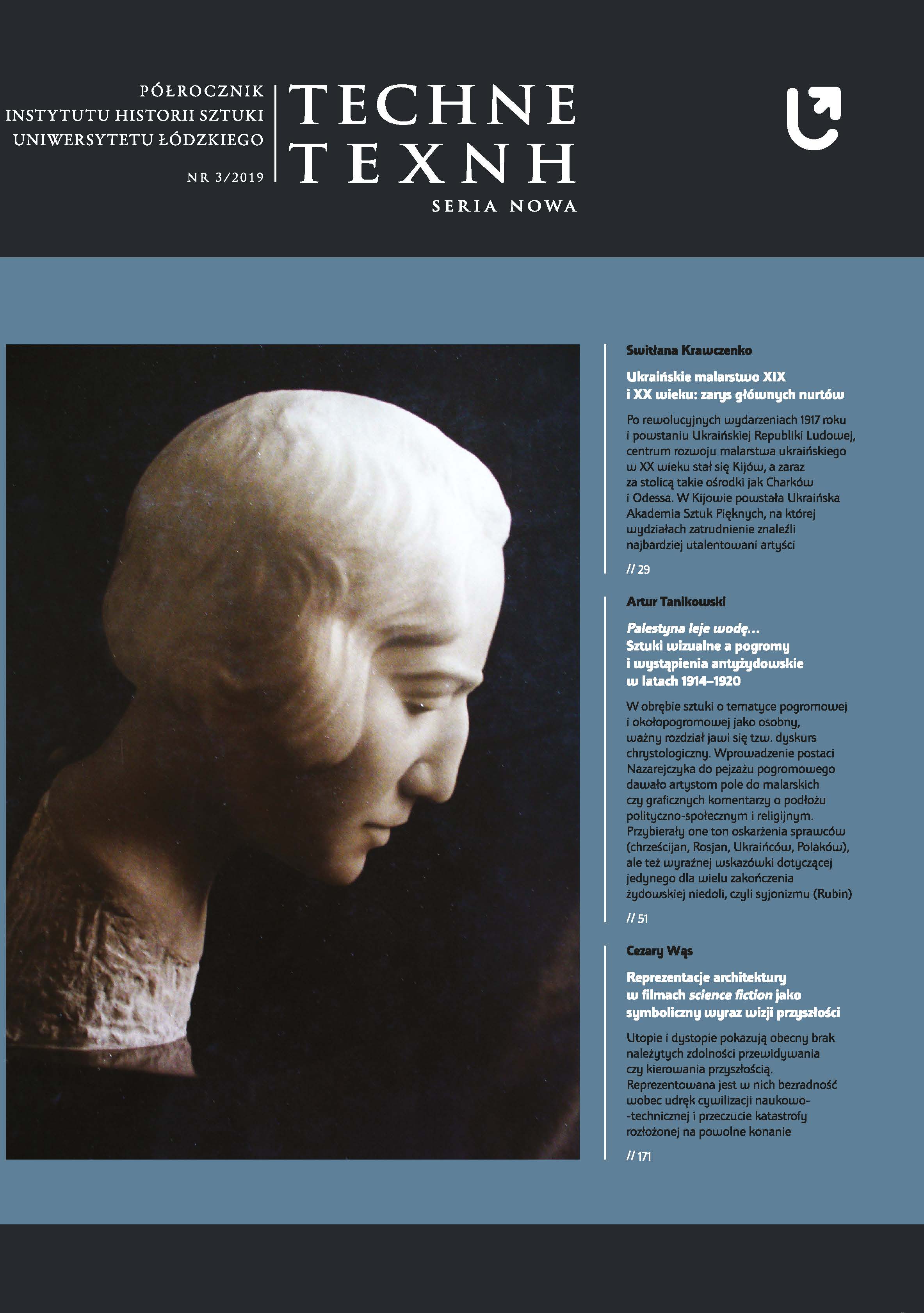Reprezentacje architektury w filmach science fiction jako symboliczny wyraz wizji przyszłości
Representations of architecture in scence-fiction films as a symbolic expression of the vision of the future
Author(s): Cezary WąsSubject(s): Architecture, Film / Cinema / Cinematography
Published by: Wydawnictwo Uniwersytetu Łódzkiego
Keywords: 20th century;science fiction films; utopia; dystopia, future;science fiction
Summary/Abstract: Science fiction films from the second half of the 20th and early 21st century, contain many visions of the future, that were also a reflection on the achievements and shortcomings of the present. In the 1960s, works of cinematography were dominated by optimism and faith in the possibility of never-ending progress. People predicted the vanishing of political divisions between blocks of states and future joint space exploration. The set designers collaborated with scientists, which manifested in the depiction of cosmic constructions far beyond the real technical possibilities.Beginning in the 1970s, pessimism and the belief that the future would primarily intensify the negative phenomena of the present began to increase in films. Fears of the future were saturated with an indication of various possible defects and insoluble contradictions between them. Therefore, while a certain part of dystopian visions portrayed the threat of an increase of crime, another presented the future as saturated with state control mechanisms and the universality of surveillance. The fears shown on the screens were also caused by the growth of large corporations, especially of their growing political influence or possibility of them remaining outside the system of democracy.The filmmakers also presented their suppositions related to the creation of new types of weapons by corporations, the use of which exceeded current legal norms. Particular reservations concerned the research on biological weapons and the possibility of the spread of deadly viruses. Moreover, the development of robotics and artificial intelligence research aroused fear, which must have resulted in the appearance of androids and the inevitable tensions in their relations with people. Hybrids being a combination of human body and electronic components have become a separate problem for filmmakers.Similarly, screenwriters and directors wondered about the development of genetic engineering that led to the creation of mutated human individuals. Some film dystopias considered the possibility of democratic systems collapsing and authoritarian regimes developing in their place, often based on broad public support. Within this variety of dystopia there are also films showing the consequences of modern hedonism and consumerism. The problem is, however, that works critical to these phenomena were themselves advertisements for attractive products.
Journal: TECHNE. Seria Nowa
- Issue Year: 2019
- Issue No: 3
- Page Range: 171-211
- Page Count: 41
- Language: Polish

